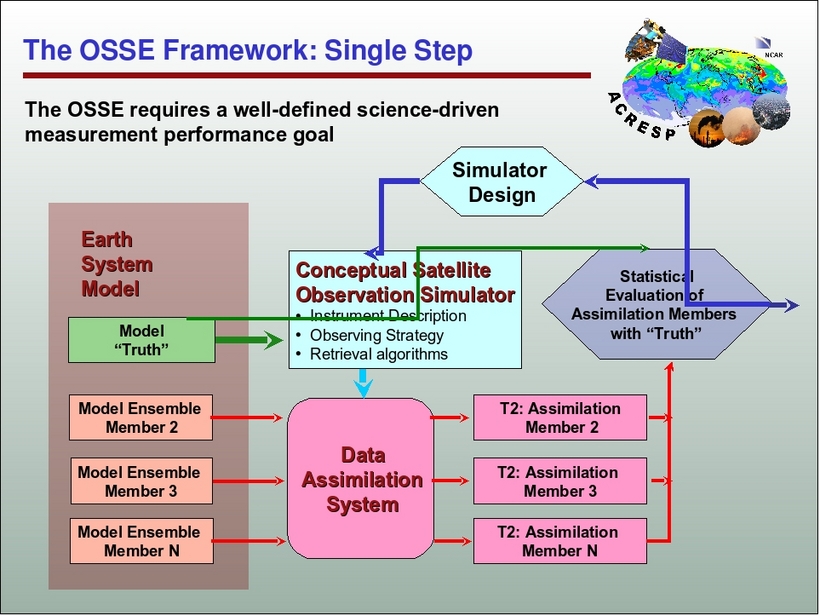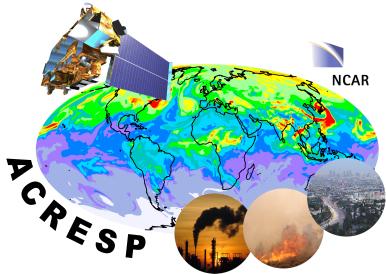
Earth System Model Evaluation Using Cross-Scale Observations

Observation System Simulation Experiments (OSSE) studies are a practical way of planning new science-driven satellite missions with a traceability matrix providing a rational chain of science requirements leading to measurement requirements and onto instrument requirements.
The experiment involves the following basic steps:
- to answer a specific scientific question, a conceptual instrument simulator is constructed;
- the simulator samples an appropriate model atmosphere ‘truth’ to produce a retrieved product with associated errors and measurements characteristics;
- the simulated product is assimilated into climatology background ‘distorted’ atmosphere(s); and
- a quantitative evaluation is performed of how quickly this assimilation is brought back to ‘truth’.
We are developing an OSSE to evaluate retrievals of planetary boundary layer carbon monoxide (CO) concentration for air quality studies.
This quantity provides useful information on pollution transport and ozone chemistry, and is probably the leading candidate trace gas for which the boundary layer concentration can be determined from space.
A longer-term goal of the ACRESP OSSE activity is to develop a community facility at NCAR that would be used by researchers from the universities and agency centers for building and testing instrument simulators as part of the proposal and design of the next generation of satellite instruments.
